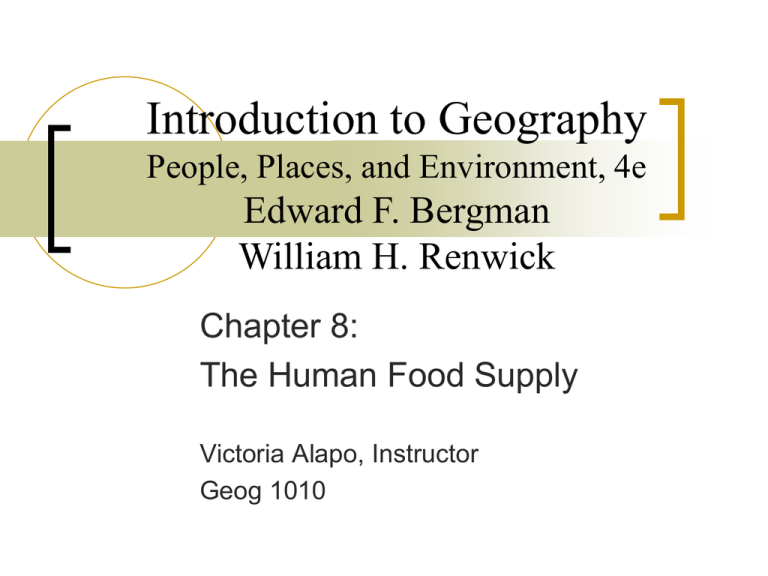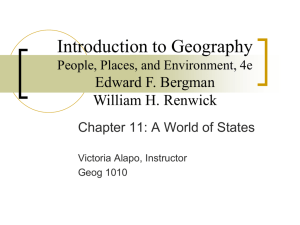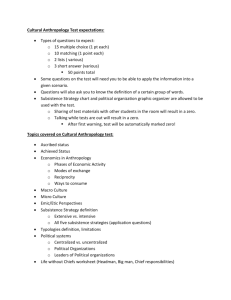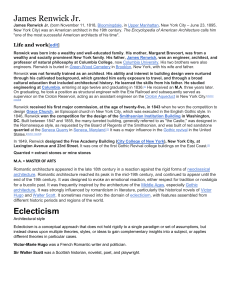Introduction to Geography Edward F. Bergman William H. Renwick Chapter 8:
advertisement

Introduction to Geography People, Places, and Environment, 4e Edward F. Bergman William H. Renwick Chapter 8: The Human Food Supply Victoria Alapo, Instructor Geog 1010 Food Supplies Over the Last 200 Years Malthus’ prediction Technological advances: Green revolution New crops New cropland Transplants and genetic engineering New lands opened by irrigation Transportation and storage Faster refrigerated modern methods Improved storage protects against spoilage and pests Agriculture Today Subsistence agriculture Commercial agriculture Raising a variety of crops Monoculture Food for sale Polyculture Food for self and family Specializing in one type Pastoral nomadism Transhumance – when nomadic movement is regular and seasonal Subsistence and Commercial Agriculture Subsistence Traits Relies mostly on human labor – little animal or machine power Low technology use Smaller average farm size Most food is consumed by farmer Commercial Traits Relies on capital investment in machinery, chemicals, improved seeds Large average farm size Products sold to agribusiness companies Fewer family owned farms Introduction to Geography People, Places, and Environment, 4e Edward F. Bergman William H. Renwick Chapter 9: Earth’s Resources and Environmental Protection Victoria Alapo, Instructor Geog 1010 What Is a Natural Resource? Anything from nature that people use and value; distinguished from human creations and inventions Nonrenewable resources Limited amounts e.g. gas, oil, coal, metals Renewable resources Replaced continually e.g. air, wind, water, solar Mineral Resources Distribution of deposits are uneven Encourages Cartels. And a cartel is when a group of countries come together to determine the price of a good e.g. OPEC, diamonds, etc Distribution of Oil 2/3 of oil reserves in Middle East (77% of world total). See next table. North America and Europe have highest per capita oil consumption rates (next slides). World Energy Consumption The U.S., with about 5% of world population, consumes almost 25% of world energy. Solid Waste Sanitary Landfills NIMBY – “not in my backyard” Recycling reduces waste Renewable Energy Hydroelectric Flowing water; ¼ of world’s electricity Nuclear: potential accidents, radioactive waste, public opposition, high cost. Pg 372. Biomass Wood, plant material and animal waste; home heating and cooking in most of world Brazil vehicles use a lot of ethanol fuel (highest rate in the world) Solar Wind generation Air Pollution Urban air pollution Temperature inversion – when the ‘upper’ atmosphere is warmer than the ‘lower’ atmosphere. Caused by rapid cooling of surfaces at night. (See next slide)



